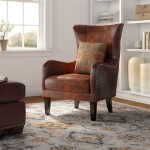Living Room Rug Over Carpet: A Comprehensive Guide
Combining a rug with carpet in the living room has become a popular trend in interior design. While this layering technique can add warmth, texture, and style to the space, it's essential to approach it with consideration to achieve a visually appealing and functional outcome.
Benefits of Using a Rug Over Carpet
- Increased comfort: Rugs provide an extra layer of comfort underfoot, making the living room a more inviting and cozy space.
- Enhanced visual appeal: Rugs break up the monotony of a solid carpet, adding color, patterns, and textures that can transform the overall look of the room.
- Noise reduction: Rugs absorb sound, which can help reduce noise levels in living rooms with hard flooring or high ceilings.
- Protection: Rugs can protect the carpet from spills, dirt, and wear, extending its lifespan.
Types of Rugs Suitable for Carpet
Not all rugs are created equal when it comes to placing them over carpet. Opt for rugs with the following characteristics:
- Low pile: Low-pile rugs have a short, dense weave that won't create bumps or wrinkles on the carpet.
- Flatweave: Flatweave rugs are tightly woven without a pile, making them ideal for layering over carpet.
- Natural fibers: Natural fiber rugs, such as jute, sisal, and wool, are durable and breathable, making them suitable for high-traffic areas.
Choosing the Right Size and Shape
The size and shape of your rug will depend on the dimensions of your living room and the placement of furniture. As a general guideline:
- Size: The rug should be large enough to anchor the furniture and define the seating area.
- Shape: Rectangular rugs are a classic choice, but round or oval rugs can add a unique touch.
- Placement: Position the rug so that the front legs of your furniture rest on it.
Coordinating Rug and Carpet Colors
The colors of the rug and carpet can either complement or contrast each other. Here are some approaches:
- Monochromatic: Choose a rug in a similar shade to the carpet for a subtle and cohesive look.
- Contrasting: Opt for a rug in a contrasting color to create a striking focal point.
- Complementary: Select a rug in a color that complements the carpet, such as blue and orange or green and red.
- Use a rug pad: Place a rug pad under the rug to prevent sliding and provide extra cushioning.
- Vacuum regularly: Vacuum both the rug and carpet regularly to keep them clean and free of debris.
- Rotate the rug periodically: Rotating the rug occasionally will help prevent uneven wear and extend its lifespan.
Additional Tips

The 11 Best Rugs For Carpet That Won T Move Bless This Nest

Can You Put An Area Rug Over Carpet Vifloor

How To Layer Rugs On Carpet The Home

Layering Rugs On Top Of Other In Interior Design And Decor

Rugs On Carpet Should You Go For It Yes

The 11 Best Rugs For Carpet That Won T Move Bless This Nest

Our Top Design Tips For Styling Rugs On Of Carpets

How To Use Area Rugs Over A Carpet Boutique

How To Layer Rugs On Carpet The Home

5 Reasons You Should Be Rug Layering Floorspace








